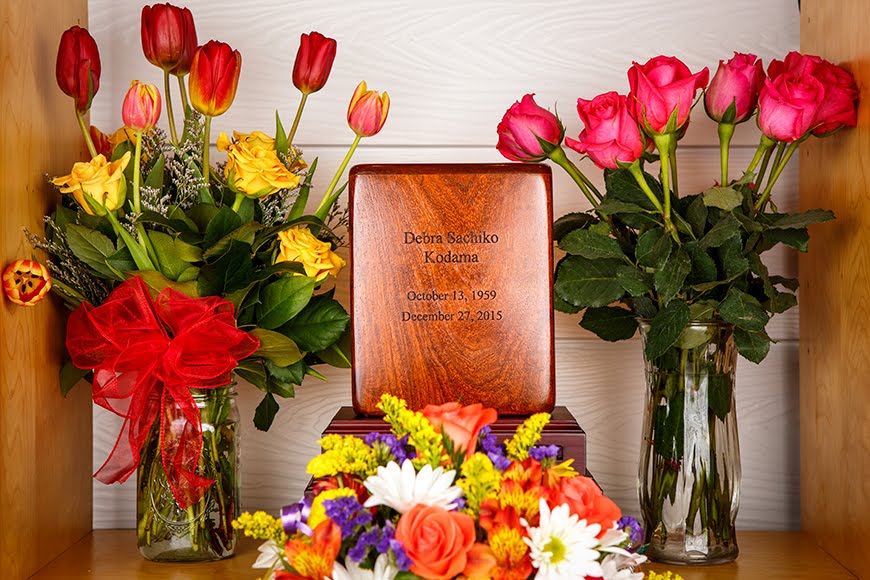No, not that kind of quickie...get your mind out of the gutter...haha...no, this is just a quick post to keep this blog from going into suspended animation again.
A few days ago Adobe Creative Cloud popped open (it's been doing that daily now since it updated itself the other week) and said there were new updates to some of the applications I'm using. So I told it to go ahead and update Lightroom and Photoshop and now I see that I have Lightroom CC 2015 and Photoshop CC 2015. I saw something on facebook a few weeks ago about a new feature in Lightroom that I've been wanting to try...a feature called "Dehaze"...and now I'm able to give it a try.
Since I haven't been shooting much lately (I'm still in a creative funk) I didn't have any new photos to edit, so I looked through some older DNG files for something suitable to play with. I couldn't find anything that had any distinctive haze in it, so I ended up just picking one at random and proceeded to edit it. The photo I chose is from May 10, 2014 and it was taken at the Makai Pier near Makapuu with my Canon 5D Mk III and EF 24-70mm f/2.8L USM lens - ISO 100, f/8.0 at 5 seconds.
This is the SOOC (straight-out-of-camera) image with no adjustments other than straightening of the horizon and reducing the size and exporting the image as a JPEG through Lightroom...yeah, it's pretty blah.
Besides trying out the Dehaze feature in Lightroom CC 2015, I also wanted to try out a few post processing tricks I read about within the past few months.
A few years ago I created a some presets in Lightroom that apply a specific Camera Calibration and Profile as well as removing any sharpening and noise reduction defaults since I prefer to do those in Photoshop. The presets also apply small adjustments of Clarity, Vibrance and Saturation.
Once the selected preset was applied I gave the Dehaze Tool a try and found that it kind of works like the Clarity Slider but besides making contrast adjustments it also seems to apply a bluish tint to the top half of the image. I only played with Dehaze a short while and will have to try it on different types of images in the future to get a better feel for what it really does.
I used the Gradient Tool to reduce the exposure in the sky and increase the exposure in the rocks in the foreground. What's nice about the Gradient Tool is that you can also make other adjustments within the gradient area you're working with. So I made adjustments using the Highlights, Shadows, Whites and Blacks sliders. Once I closed the Gradient Tool I did some global adjustments in the Basic panel starting with the White Balance slider and making my way down the panel.
This is the image with the Lightroom CC 2015 adjustments before sending it to Photoshop CC 2015 for final adjustments...looking a little better.
Once in Photoshop I used an action I made to apply Lab Color adjustments and then used NIK Dfine 2 to apply some noise reduction. I then used NIK Sharpener Pro 3 RAW Presharpener to apply some capture sharpening. I followed with NIK Color Efex Pro 4 using a few preset filters (Dynamic Contrast, Brilliance/Warmth and Color Contrast Range) to apply some contrast and color adjustments.
I recently learned that NIK Color Efex Pro 4 has the ability to decrease the opacity of certain filters to suit your taste (the opacity slider is hidden in the Control Points option). In the past I would adjust the opacity of the NIK adjustment layer in Photoshop to reduce the intensity of the Color Efex Pro 4 adjustments, but by using the opacity slider in each NIK filter you have a little more control over the final results.
I then used NIK Viveza 2 for a little more fine tuning of the image before adding my watermark.
I haven't been using Luminosity Masks much lately, but that's because I haven't been shooting much and haven't had any images that would benefit from using Luminosity Masks. I do need to start using these powerful tools again before I forget how they work.
But I do use Tony Kuyper's web sharpening actions for image size reduction and final output sharpening. I've compared it to the NIK Sharpener Pro 3 Output Sharpener and the Pixel Genius PhotoKit Sharpener 2 and feel it does a good job for web based images. And it's a lot easier than reducing the image manually and sharpening the image using Unsharp Mask or Smart Sharpen.
Anyway, this is the final image...now, I haven't been shooting or post processing much lately and I think this image is probably over-done a bit (this is what happens when you don't keep practicing) but I just wanted to show you what can happen to a digital image in the hands of an amateur photographer who is still learning his craft.
I am working on another post...one that I started about a month ago, but I just can't seem to get my thoughts together yet...haha...I'll get to it...eventually.



